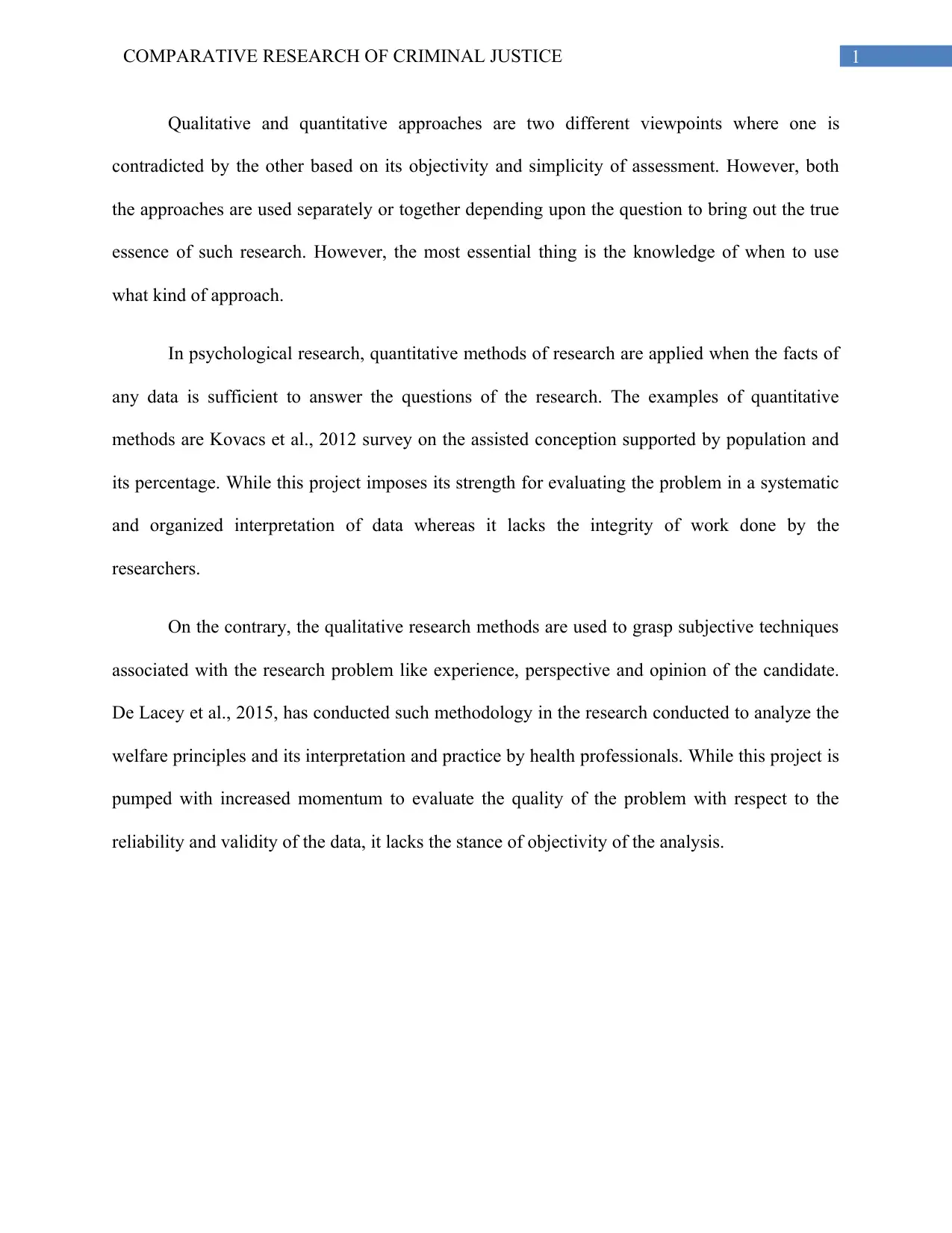Comparative Research of Criminal Justice: Analysis Report and Review
VerifiedAdded on 2022/10/12
|3
|421
|50
Report
AI Summary
This report provides a comparative analysis of research methods in criminal justice, focusing on qualitative and quantitative approaches. It highlights the strengths and weaknesses of each method, using examples like Kovacs et al.'s (2012) survey on assisted conception (quantitative) and De Lacey et al.'s (2015) study on welfare principles (qualitative). The report emphasizes the importance of selecting the appropriate research approach based on the research question and data requirements. It discusses the subjective nature of qualitative research, focusing on experiences and perspectives, and contrasts it with the objective nature of quantitative research, which uses statistical analysis. The report references key studies to illustrate the application of these methods in different contexts and underscores the critical role of choosing the correct method for achieving reliable and valid research outcomes in the field of criminal justice.
1 out of 3










![[object Object]](/_next/static/media/star-bottom.7253800d.svg)